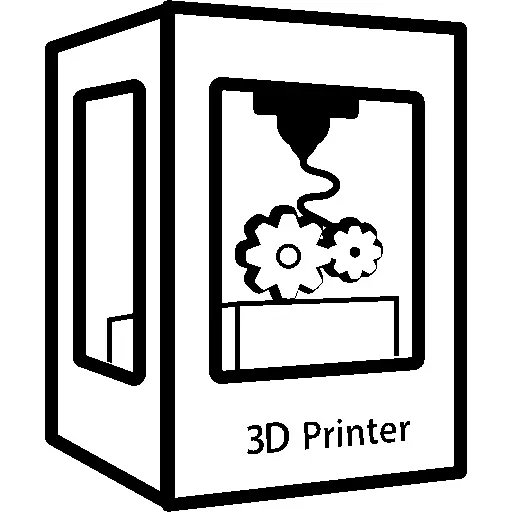As you may know, I now wear 3D-printed glasses.
I’ve been wearing glasses for decades, since age 3, and because I’m lazy, I never take off my glasses even when I sleep, I’m not sure how, but even when I’m asleep, I never turn into a position that would damage my glasses. Decades of habit I guess…
Anyhow, the point is, apart from when I shower and when I go to the swimming pool, those 3D-printed glasses are sitting squarely on my face all day, every day. So probably close to 23.5 hours a day.
And I’m happy to report, PLA and PETG seem to have zero effects on my skin. No rash, no redness, no itching, zero discomfort. I’ve worn each material for at least 2 months straight and they seem perfectly fine.
I don’t see any degradation of either material either, even after being exposed to acidity and oil from my skin for hours on end. I didn’t expect PETG to react to anything, since it’s more or less the same stuff soda bottles are made of, but I thought maybe PLA would degrade. But it doesn’t. Perhaps it degrades slower than I anticipated. I’ll report back in a year 🙂
You wear your glasses to bed…?
Dreams would be blurry otherwise no?
Not on purpose 🙂 Either I fall asleep with them on, or I forget I’m wearing them. When I wake up, there’re still there and completely unscathed. It’s been like that for decades, so I don’t sweat it.
Fascinating! Where do you order the lenses? I’m in the US and I can’t find a place that is cheaper then Zenni where I can get my lenses and frames for <$20.
I order my lenses from my local optician. They’re not cheap - I pay $75 for single vision lenses and $600 for my progressives. But I have strict requirements for the material the lenses are made of (Trivex) and the el-cheapo Chinese suppliers don’t really tell you what material they use (usually CR-39) or they simply disregard what you tell them.
Also, I want the lenses edged with a precise kind of bevel and fitting the frame template I supply, and frankly the only company I really trust to do my lenses well is Hoya. They’ve always done a perfect job of all my lenses. Unfortunately, I can’t order direct from Hoya. So I go through my optician and tell them what to tell Hoya essentially.
But the point is this: however much my lenses cost me, when I need new glasses, I can simply print new frames. The lenses are a one-off purchase: if I break my frames, I’m my own man: I print new frames in minutes and it’s like the accident never happened. I only replace the lenses when my vision changes, which isn’t that often.
Simply not having to have new lenses made each time you have an accident with your glasses makes 3D-printing the frames worthwhile, even if you splurge on the lenses.
Zenni does trivex at a premium when compared to CR39. Still might be cheaper than $600.
I didn’t know that. Maybe I’ll order a set of lenses from Zenni to give them a spin. I’d be interested to see what I receive for that money.
Thanks!
How do your lenses not get scratched? I usually have to replace the lenses before the frame
Maybe this would help 🙂
I already only use a microfiber cloth (provided with a case by zenni at purchase time), but I normally use water. Why do I need to buy a special fluid?
The special fluid isn’t strictly needed. It’s just water with a few mildly useful ingredients in solution - most importantly a solvent that’s safe for plastic glasses. But it’s mostly distilled water, so it won’t leave stains like hard water would.
If water is good enough for you, then it’s enough I guess. Although cleaning the lenses with soap would be preferable to straight water.
The most important thing to avoid scratching your lenses is to resist the temptation to clean them with anything other than a spotlessly clean microfiber cloth and cleaning fluid - or soap and water. Like blowing on them and cleaning them with your shirt: that’s guaranteed to scratch them.
And if you have only one microfiber cloth, get more. They get dirty and start scratching lenses too very quickly if you don’t clean them regularly. Me, for the price, I just throw them away and get new ones.
Yeah I can’t throw cloths away, so probably I should launder my microfiber cloth more frequently
How’d you get the hinges to be strong enough?
They’re plenty strong, thin though they are. If you account for the shortcomings of 3D-printed parts in your design, you can make them quite strong without adding that much bulk.
But mostly the thing that protects glasses in this style is that they’re quite narrow, so the temples are almost flush with your head along the entire length. So even if you lay your head on a pillow, or you get hit from the side, it won’t break your glasses. Before wearing those 3D-printed frames, I used to wear the exact same ones made of metal and I never broke them either solely for that reason, despite being rather active.
Vintage style round frames are a lot more durable than more modern, more stylish wider frames. The cost of course is looking like you’re a time traveler from 1910 🙂
Dude you already need glasses so do something good for your eyes and seal the whole thing in epoxy resin or something. It’s certainly not good for your health to get microparticles in your eyes and mucous membranes all the time… If it breaks (e.g. because you have an unfortunate fall or someone accidentally knocks the door in front of your head), there should also be fewer fragments that could pose a risk to the eye if it is sealed. Eyesight is too precious and it doesn’t take much more work, although that wouldn’t be an argument against it anyway, as health should have a higher priority.
Otherwise I can only say: good work. A good printer owner who makes something really useful with the tool.
get microparticles in your eyes and mucous membranes all the time
Wh… What? :🙂 PLA and PETG are thermoplastics, not asbestos. They don’t shed microparticles all the time. Not to mention, they are considered very safe.
there should also be fewer fragments that could pose a risk to the eye
Have you tried breaking a PLA or PETG part? They don’t shatter into shrapnel.
Are you sure you’re talking about the same materials? 🙂
Otherwise I can only say: good work. A good printer owner who makes something really useful with the tool.
Thanks!
I don’t compare it with asbestos… rather with the plastic you ingest by drinking and eating… or by breathing in the fine abrasion of car tires. You don’t have to add extra plastic to your eyes. So when I break something made of PETG, it has already happened that it splintered. Well, in the end it’s your eyes and I only meant well.
I only meant well
I know and I appreciate.
All I said was, FDM plastics don’t spend their lives shedding particules after printing. As for PETG creating splinters, I haven’t seen this happen - and I would have because I printed a few glasses temples that didn’t print quite right and crumpled them in my hand, and they sort of broke limply in my hand rather snap sharply.
Maybe you have a slightly different variant?
Anyway, even if it did do that, I’d say the risk probably isn’t greater than acetate glasses frames. When that crap ages and dries up, it creates nasty bits when it breaks. Yet it’s widely used to make frames.
Well, it wasn’t a spectacle frame and was a bit more robust and rigid. After printing and as soon as it goes on the nose, it is permanently exposed to UV radiation and external influences.
Well, my main frames with the progressive lenses that I wear outdoors most of the time is printed in PETG, and that’s pretty much impervious to UV. My PLA frames are near glasses I wear only indoors when I work at the computer. On top of that, I live way up north, and UVs are so scarce here we have to take vitamin-D supplements year round 🙂 So I guess I’ll be okay on that front.
As for abrasion on my nose, I don’t think that will produce particles that will fly into my eyes. More likely, it would create some contact rash on the skin of my nose or something, and it doesn’t - which is what I’m reporting in this here post. Other than that contact point and my ears, the frames aren’t really rubbing on anything anywhere else.
PLA is more resistant to degradation than it often has a reputation for. So yeah, it can holdup pretty well in a lot of use cases. For most, PLA frames would probably hold up just fine until they needed a new prescription. The issue with either common consumer PLA or PETG, is you can’t be sure of just how anyone person will react to the constant contact with the material over time. Allergies can popup with continuous exposure. As always:YMMV
Longest I can wear glasses is a few hours before they drive me crazy and I have to take them off.
Were you able to make something more comfortable by having a custom frame that fits your face perfectly?
Were you able to make something more comfortable by having a custom frame that fits your face perfectly?
Yes that’s exactly it. Although I didn’t start with the 3D-printed glasses: I made my first frames myself some 20 years ago. It took me a bit of trial and error to get the shape of the nose bridge to match my nose exactly, and the ear hooks to match the shape of my ears exactly also. When everything was dialed in just right, the glasses pretty much “vanished” completely, if that makes sense.
I did the same thing with the 3D-printed glasses. That’s why I shared how to modify the dimensions on my Github, and if you go through the repo’s history, you will find a few of the adjustments I did to get them to fit me perfectly. They have all but vanished too, and the very light weight of the 3D printing plastics make them even more comfortable: my current pair weighs around 11g.
Is there any magic way to 3D scan a face to eliminate the trial and error?
Yes and no.
You could use a 3D scanner - or photogrammetry to convert a bunch of images into a 3D scan, if you’re patient enough to clean up the point cloud. That would give you a model to get close to the final geometry of the glasses.
Or you could go low-tech and, with someone’s help, get a cast of your face and ears in latex, then cast an acrylic print of your face in the latex mold.
But I don’t think it’s really worth doing for two reasons:
-
The parts may look like they fit you perfectly on the model and you’ll find out something puts pressure somewhere after wearing it for more than a few hours. For example, the curve in my ear hooks is a bit wider than my ears so the cables miss a spot just behind the root of my ears that gets incredibly itchy after a while, and the cables contact my ear a bit below. And so if you look at my temples they don’t in fact quite match my anatomy. But they feel more comfortable.
-
It’s only a few parameters that don’t vary too much and and fairly independent of each other. Once the nose bridge fits you, it’s good to go regardless of the shape and length of the temples and vice-versa. So while it can be faffy to get exactly right if you’re very demanding with the comfort of your glasses like I am, it’s only a few reprints to get it right once and for all.
And finally remember: you can go the usual optician’s route: print generic parts once, then use hot air to shape them to your anatomy until you’re happy. Then you’d only need to print them once.
The reason why I took the time to dial everything just right in the 3D models is because I want to print frames that fits me perfectly right ouf of the printer, each and every time with complete consistency. But you don’t have to do that: if you have the patience each time you print new frames, you can print generic parts and shape them to your face.
I’m curious if the shape of your face has changed over the years?
The frames I made 20 years ago still fit me perfectly. So I guess it hasn’t.
The only difference I’m aware of is, after many years wearing the same nose bridge without pads, it’s left a little *step" or indent in the skin of my nose, which is actually very convenient if I wear library temples because it prevents my glasses from sliding off.
deleted by creator
deleted by creator
-
Thanks. This is useful knowledge 👍👍 As for the fumes I still breathe in … 😬
Never been too concerned with fumes at typical temperatures (higher temperatures required for PETG and the effect of those temps on PTFE bowdern tubes are a different box of frogs), but stringing getting pulled into the extruder fans scares the crap out of me as it basically becomes an ultra fine dust that builds up in the air and eventually settles waiting to be disturbed.





